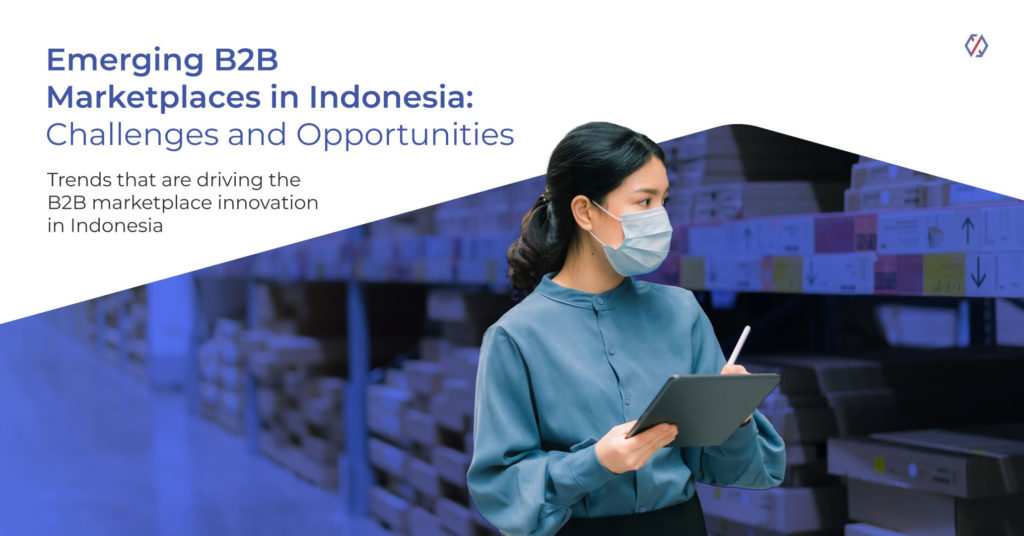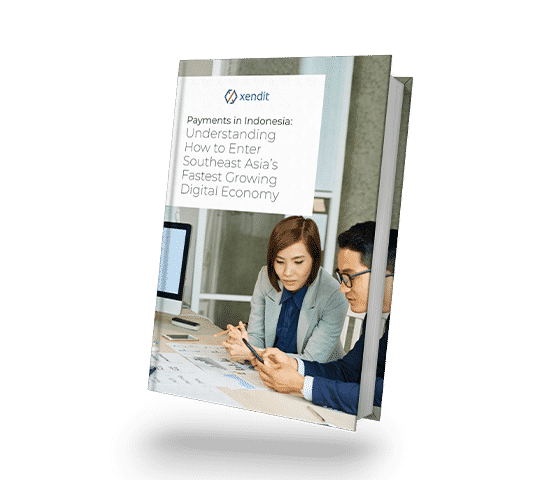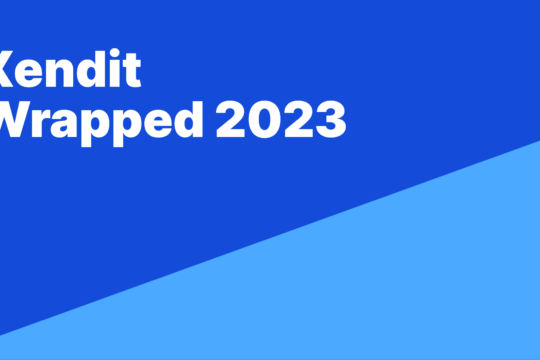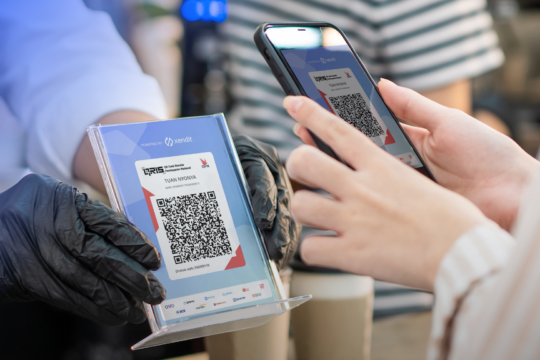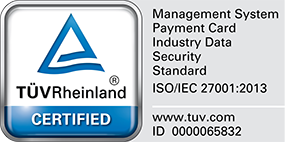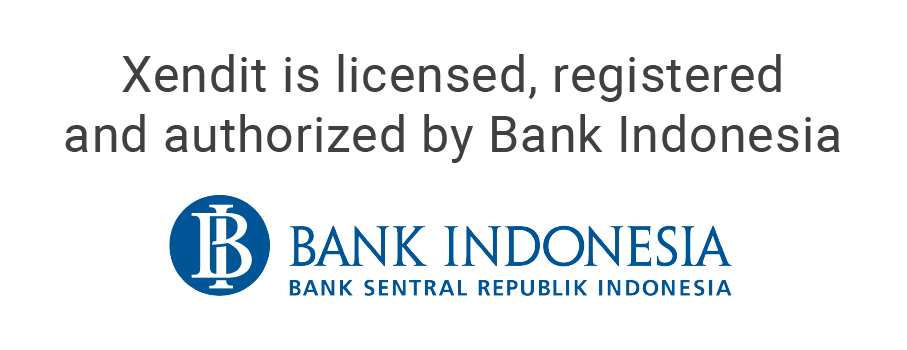The potential of business-to-business (B2B) e-commerce is promising in Indonesia. Increasing penetration of the internet and growing dependence on IT amongst the youth is popularizing the online shopping trend. Additionally, the B2C market experienced stellar growth in the past two years. The emergence of the online B2B marketplace is at an inflection point and is poised to experience exponential growth in the coming few years.
The Indonesian B2B e-commerce market was estimated at $1.5 billion in 2018 and is anticipated to grow at a CAGR of 50%-55% to reach $30 billion by 2025. Of this, the mom and pop stores—warungs—accounted for $0.5 billion in 2018 and is forecast to grow to to $14 billion by 2025. Additionally, the Indonesian government reported that 3.97 million of the 63 million SMEs use online B2B E-commerce platforms.
These numbers represent a huge potential waiting to be tapped, with many e-commerce unicorns proliferating throughout the region. Here are the trends driving the B2B marketplace innovation in Indonesia.
Trends that are Driving Innovation
A Shift in Consumer Behavior
The Indonesian market is witnessing an online boom. The market conditions are perfectly aligned to boost online shopping and procurement activity in the country. Digital literacy is on the rise and is further turbocharged by the pandemic-motivated shift to online consumption. While business-to-consumer (B2C) consumption patterns changed first, B2B procurement patterns are gradually catching up.
As more consumers shop online and expect their products more quickly, this means change for the fast-moving consumer goods (FMCG) chain to retailers. The conventional model is multileveled with many intermediaries, as demonstrated in the model, below.
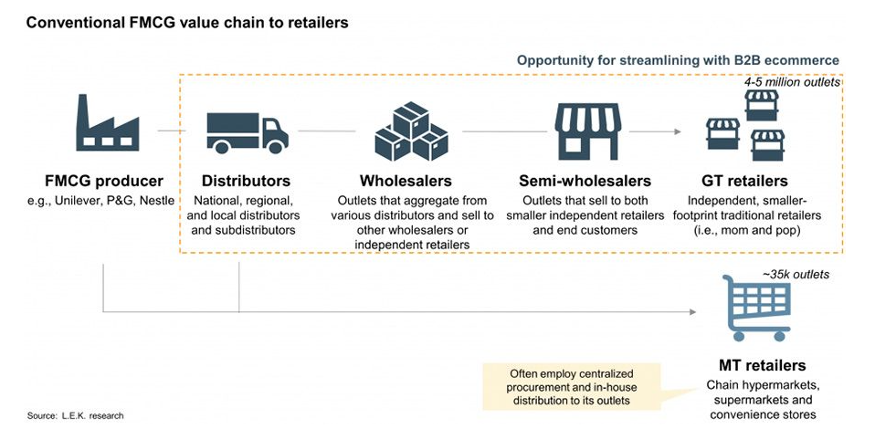
Source: Consultancy Asia
In the conventional model, independent store owners purchase an FMCG product from at the last logistics point following a long line of intermediaries. These include producers, distributors, wholesalers, and semi-wholesalers. As the conventional model has multiple bottlenecks, there are plenty of opportunities to streamline the system, and ensure that retailers receive products more quickly and efficiently.
An Increase in Successful B2B Platforms
The B2C e-commerce revolution is optimizing last-mile deliveries. Meanwhile, the B2B online marketplace is improving the mid-mile delivery ecosystem.
The rise of B2B platforms like Ula, Telio, Ralali, Mbiz, Bizzy group, and GudangAda attest to the B2B e-commerce marketplace revolution in the Indonesian market. These start-ups in B2B e-commerce are introducing innovative solutions to shorten the long supply chain problem. A shorter supply chain and fewer intermediaries mean fewer delivery delays.
Below are top two models currently being adopted by the Indonesian B2B e-commerce start-ups:
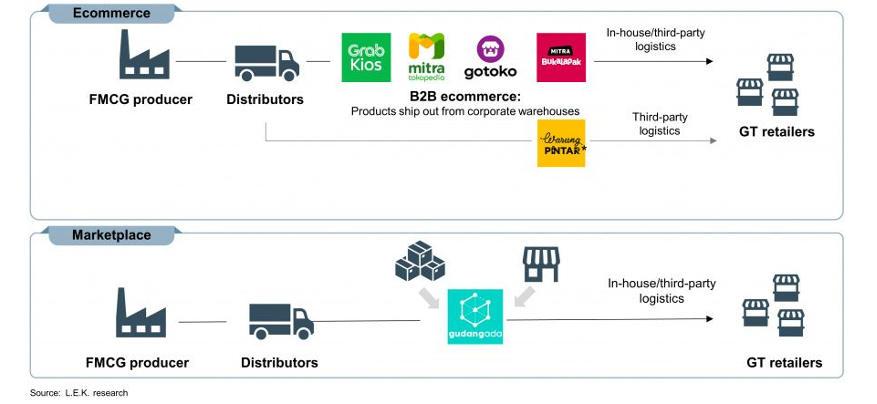
Source: Consultancy Asia
Gotoko, Mitra, Grab Kio, and Warung Pintar are examples of B2B e-commerce platforms that link traditional FMCG retailers to distributors, thereby eliminating several intermediaries and optimizing cost and time in of the supply chain.
Gudangada is using the alternative model displayed in the second model, above. Rather than eliminating intermediaries altogether, the company is building a B2B marketplace that simplifies working with them.
Challenges faced by B2B E-commerce platforms
While B2B e-commerce is increasing and is poised to offer many benefits, it isn’t without its set of challenges, such as the following.
High Operating Costs and Low Productivity
Indonesia is an archipelago, a collection of 17,000 islands. This makes it one of the toughest regions in which to build logistics and supply chain connectivity. The rough terrain in combination with poor road infrastructure leads to high lead times, unpredictable delivery duration, and expensive transportation.
In addition to transportation costs and lead times, credit financing can be a problem. Retailers depend on credit given by suppliers. The degree of dependence on credit depends on the category of goods. Therefore, any successful strategy to get retailers on a B2B e-commerce platform must address the credit financing problem.
Slow Onboarding Processes
Another challenge that B2B marketplaces face is large-scale onboarding of sellers on e-commerce platforms. There are millions of sellers in the market. Onboarding each one separately is a tedious task. The platforms need a streamlined process where they can create accounts and onboard sellers quickly to ease workloads.
Limited Centralized Reporting and Management
As B2B e-commerce gains momentum, the need for centralized reporting and account management will increase. With millions of active users per day, centralized processes are better able to quickly generate reports, while simplifying data collection and analysis. This, in turn, would provide valuable insights into business trends.
Opportunities for B2B E-commerce Growth
Omnichannel Approach
As customers, most of us switch between visiting an offline store and online shopping. This is true for business procurement too. The mode access might vary, but all the channels should give the same experience. An omnichannel approach is what B2B e-commerce platforms need to adopt. The omnichannel approach is an integrated approach to selling and serving customers across physical and virtual channels. It focuses on creating a high-quality customer experience by connecting all sales channels.
Simplified Solutions for Speed and Cost Efficiency
The crux of B2B e-commerce revolves around providing solutions aimed at increasing the speed of business procurement in a cost-effective manner. B2B marketplaces are aiming to achieve this target by removing the intermediaries and simplifying the distribution process. Another approach they are using is streamlining the intermediaries in a way that makes the business procurement process transparent and systematic. While both these processes can be polar opposites, their aim is to make procurement faster and less expensive.
The engineering team at Xendit specializes in providing simplified solutions aimed at increasing speed and cost-efficiency. The Xendit’s engineering team designed the solutions around the following points:
- Extensive API documentation that the client’s IT team/developers will appreciate.
- Technically strong solutions team that work closely to make onboarding seamless
- In-depth technical reports from Account Managers which can be used to troubleshoot on a day-to-day basis: saves further time and cost.
Payment Flexibility
A simplified payment interface for a B2B marketplace is the need of the hour. An e-commerce platform will need an advanced system capable of accepting various methods of digital payment, then tracking payments the marketplace facilitates for its partners. The system should also be capable of routing payments, while offering the capability to monitor transactions by maintaining centralized reports.
Challenges and Opportunities in Indonesia for Emerging B2B Marketplaces
Abundant opportunities await within the Indonesian B2B space. But to succeed, the focus must be on increased delivery speed and reduced procurement time, along with a boost in cost efficiency and ease in onboarding partners. Also important to success are reducing the number of channel intermediaries, while implementing more effective financial and payment systems.
Xendit provides various payment gateway services to Indonesian businesses moving onto B2B e-commerce platforms. A single integration enables businesses to accept credit and debit card, e-Wallet, bank transfer and other payment types. Also available are risk management services, online store hosting for SMEs, and on-demand payouts.
For more information on how you can streamline payment activities on your B2B platform, contact the Xendit sales team for a no-obligation consultation.
